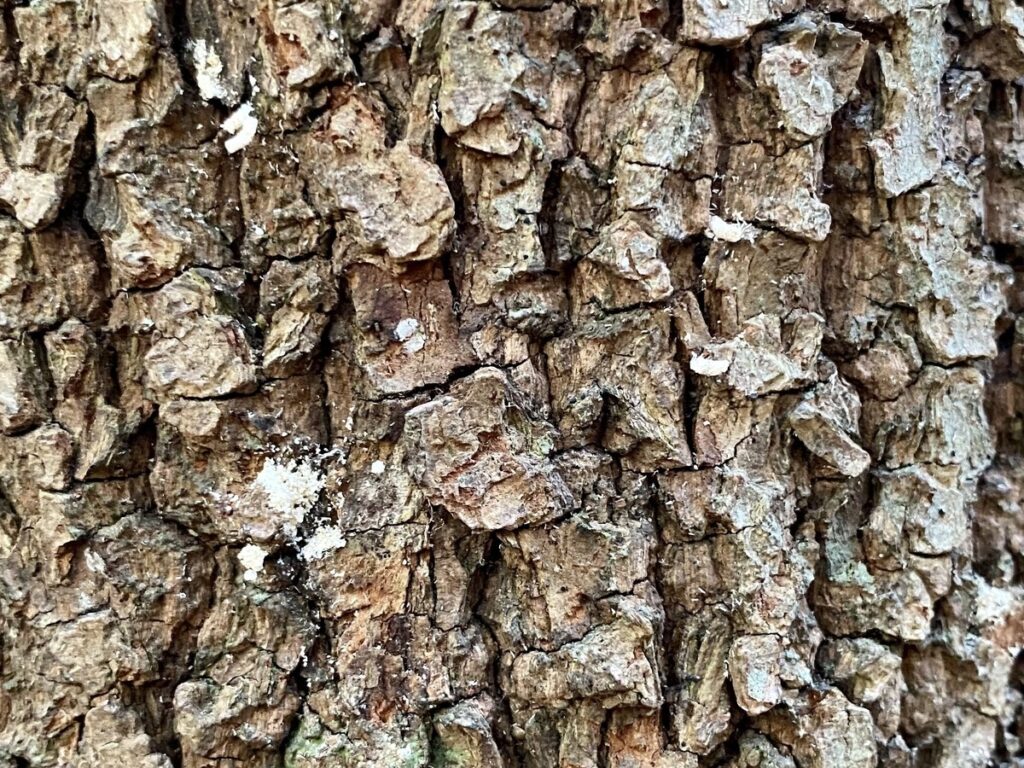Laurel wilt, Raffaelea lauricola, is a fungal pathogen spread by the Redbay Ambrosia Beetle, Xyleborus glabratus. It affects all species in the Laurel family, Lauraceae sp., including sassafras, laurel, and bay trees.
Infections are fatal and can spread quickly to susceptible trees nearby. Redbay ambrosia beetles carrying the fungus infect mature trees and lay their eggs in the tree’s trunk. The fungal infection spreads through the vascular system of the tree, impacting the tree’s ability to transport water throughout the canopy and becomes a food source for the beetle larvae as they are developing.
As beetles emerge, they carry with them fungal spores of laurel wilt to cultivate in a nearby tree and lay eggs for the next generation.
Signs and symptoms
Infected trees show symptoms like drought stress, as the fungus disrupts the tree’s water delivery system. Key indicators of laurel wilt include:
- Mature trees targeted before saplings.
- Leaves rapidly changing from green to yellow within weeks, eventually turning brown, branches die, and branch tips begin to wilt.
- Compacted sawdust tubes across the trunk and major limbs indicating redbay ambrosia beetle activity.
- Small beetle boring holes, about the size of a pinhead, visible on the trunk.
- Black-stained streaks on sapwood, just below the bark visible in trees that have recently declined, indicating laurel wilt infection.
- Trees that have died do not resprout.
Spread
The redbay ambrosia beetle carries laurel wilt spores and infects trees by boring into the stems of mature laurel trees. Infected trees can support multiple seasons of beetle attacks before they die.
Beetles will lay their eggs in the sapwood of the tree and cultivate the fungus in the vascular system of the tree to serve as a food source for their larvae. The fungus spreads throughout the tree’s trunk, blocking the flow of water and nutrients, leading to tree decline and death. Adult beetles then emerge with spores to search for new laurel trees as hosts and continue the disease cycle.
Once infected, trees can die from laurel wilt from weeks to months without resprouting. Infected wood can support beetles for multiple seasons.
Management
Currently, there is no broad-scale cure for laurel wilt. Fungicides injections of products with the active ingredient propiconazole can offer protection for high-value trees, and researchers are working to develop resistant tree varieties.
Infected trees should be removed and destroyed by burning, burying, or chipping. Debris from trees with laurel wilt should always be disposed of onsite and should never be transported to other areas.
Firewood, tree trimmings, or mulch from host trees should not be moved out of counties with records of laurel wilt.
